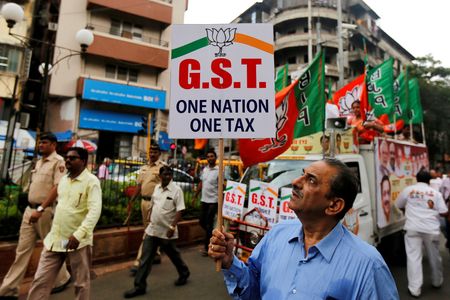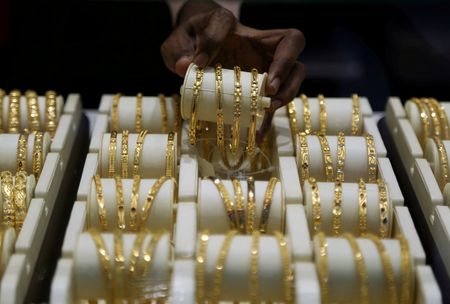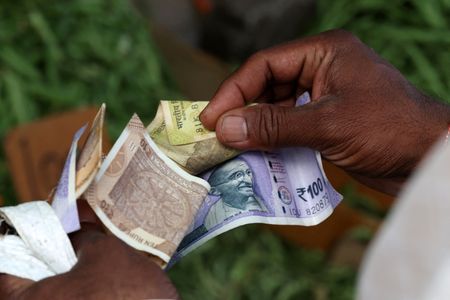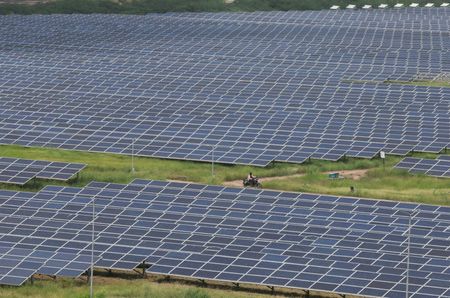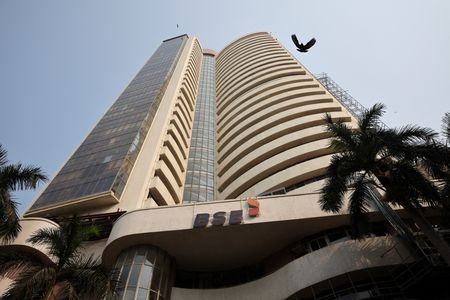By Nikunj Ohri
NEW DELHI (Reuters) -Prime Minister Narendra Modi has proposed India’s biggest tax reform in eight years to lower consumption levies on everyday goods and small cars from October, in a move seen as boosting his his image amid trade tension with Washington.
The structure of the Goods and Services Tax (GST) is complex, with states and the federal government sharing the revenue collected.
Here are details of the tax system and the planned reform:
WHAT IS THE GOODS AND SERVICES TAX (GST)?
India adopted the GST in 2017, sweeping in more than a dozen domestic state taxes in a bid to unify the economy on the principle of “one nation, one tax, one market”. It was hailed as the biggest tax reform since independence from Britain in 1947.
The new system had four tax slabs, of 5%, 12%, 18% and 28%, with scores of goods in each category. An additional levy was imposed above the tax of 28% on some items, such as cigarettes, luxury cars and high-end motorcycles.
But it was criticised for being too complex.
Pre-packaged salted popcorn is taxed at 12%, but caramel one at 18%, India said last year, triggering a dispute in which one online user questioned how a “salt caramel” variant would be taxed. Similarly, plain Indian flatbreads attract a 5% tax, but the flaky, multi-layered variety faces a levy of 18%.
WHAT’S THE REFORM ALL ABOUT?
The government plans to abolish the 28% slab that applied to products such as cars, air-conditioners and refrigerators. About 99% of products now taxed at 12%, such as butter, fruit juices, and dry fruit, would also shift into the 5% bracket.
Reuters has reported small cars will be taxed at 18% down from 28% earlier.
India collected $224 billion last year from the levies. IDFC First Bank says the new reform will hit government collections by $20 billion.
WHICH SECTORS AND COMPANIES COULD BENEFIT?
Taxes are likely to be lower on personal care items such as hair oil and toothpaste. Taxes on construction goods like cement could also be lowered, boosting demand for homes and infrastructure.
Prices of air conditioners, televisions and refrigerators are also likely to be slashed as tax rates fall, benefiting manufacturers such as Samsung and LG Electronics.
WHAT IS THE MACROECONOMIC IMPACT?
The 18% category contributed the most – 67% – to GST collection, and that will not change.
The tax cuts would damp inflationary pressures, and boost he chances for further interest rate cuts by the central bank, economists say.
However, they are expected to boost consumption, which contributes roughly 60% of India’s GDP. IDFC FIRST estimates India’s nominal GDP increasing by 0.6 percentage points over 12 months.
IS IT A DONE DEAL?
No. Making changes to the GST framework is not easy.
The plan will need approval from the GST Council, chaired by Finance Minister Nirmala Sitharaman and with representation from all Indian states, before it can roll out nationwide.
Economists estimate tax cuts will affect state government finances more than the federal government, as goods and services tax form a large part of their revenues.
In the past, states have pushed back on fixing rates on casinos, lotteries and online gaming.
(Editing by Aditya Kalra and Clarence Fernandez)

